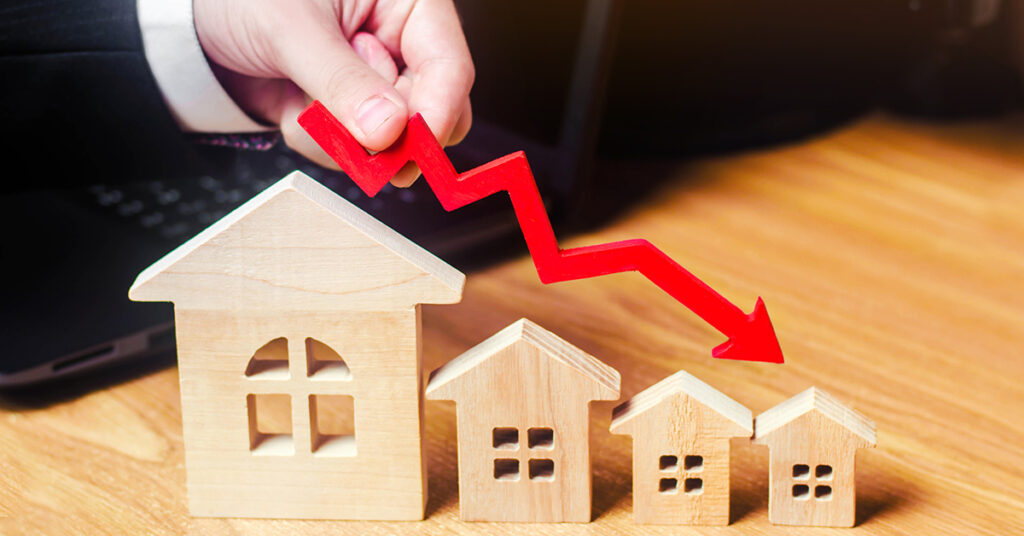
September results in property price reductions in capital cities as of October 4.
In September, property values in Australia decreased by 1.4% as the market continued to cool in reaction to rising interest rates and greater living expenses.
According to statistics supplied by CoreLogic, the reduction represented a little improvement over the 1.6% price decline in August.
Tim Lawless, director of research at CoreLogic, said that “the lack of momentum in the speed of value drop was visible in the majority of capital cities and broad rest-of-state areas, with a few exceptions.”
Sydney property values decreased by 1.8% in September, Melbourne by 1.1%, and Brisbane by 1.5% along the east coast of Australia. Hobart declined by 1.4%.
In September, Adelaide and Perth had milder decreases of 0.2% and 0.4%, respectively.
According to Mr. Lawless, Darwin is the only capital city where home values have not declined. He stated that it was too soon to determine if the downturn had reached its nadir.
“It is probable that the initial shock of a quick increase in interest rates has passed through the market, and the majority of borrowers and potential homebuyers have now ‘priced in’ more rate rises,” he added.
However, if interest rates continue to climb as quickly as they have since May, the rate of reduction in home prices might accelerate once again.
In September, the value of houses decreased by 1.5% compared to 0.7% for apartments.
Since the onset of the epidemic in early 2020, rentals in the nation’s capital have risen by 16.5%, putting renters at the forefront of housing market fluctuations. Regional rentals have increased by around a fifth.
The Australian Property Market is dropping on August 15: Should We Be Concerned?
The most significant economic data is neither the record-low unemployment rate nor even the record-high inflation rate of 6.1%.
As the graph below demonstrates, house prices are abruptly plummeting. The RBA’s rapid interest rate increases have significantly increased the cost of mortgages, and as a result, individuals are withdrawing from the property market, particularly the Sydney housing market.
Sydney’s real estate market was the first to decline. It was also the first region to experience home price declines in 2017-18, the last time the Australian real estate market had a downturn. Melbourne is closely following Sydney. In both cities, the most significant home price declines are occurring in the most expensive market group, which is the same trend we observed last time: declines began in the most costly market segments and subsequently spread.
Tim Lawless, director of research at CoreLogic, stated in May of this year, “Historically, the most costly property areas have led both the upswing and the downswing. If the same trend emerges as before, decreasing home prices will extend from Melbourne and Sydney’s wealthy areas to the rest of the country.”
Australian home prices are significant.
It would be simple to form an incorrect opinion regarding property pricing. Some analysts may view them as significant primarily inasmuch as they are socially controversial, serving as grist for demographic disputes or the generation wars, which pit baby boomers against millennials who feel they are priced out of the market.
However, there is more to housing pricing than what the headlines suggest. They are a major component of our economy and are the first to be affected by any changes in interest rates. As a result, the RBA must keep a close eye on housing prices due to their effect on other aspects of the economy.
Recent increases in the number of new mortgage loans indicate that new borrowers are more vulnerable to rising interest rates. As the subsequent graph demonstrates, loan sizes have altered drastically over the past two years as interest rates have fallen. The typical owner-occupier mortgage in Australia now begins at more than $500,000, mostly due to Sydney’s phenomenal real estate market.
These new borrowers have the most remaining on their mortgages and will be most affected by rising interest rates. Moreover, new borrowers with a small down payment have the highest likelihood of ending up underwater, i.e., owing the bank more than the home is worth, as home values decline. Even with a 20% down payment, you are underwater if the market value of your new property decreases by more than 20%. And other buyers begin with deposits that are even lower.
According to RBA data, when people owe more than their property is worth, Australians tend to continue paying down their mortgages. Unlike American debtors in distress, we do not often default. This indicates that banks are relatively secure, even if home prices decline. With one exception: if a major economic disaster causes a large number of people to lose their jobs, the inclination of Australian borrowers to continue paying down their mortgage may alter.
The combination of being insolvent and losing employment is sufficient to prompt defaults. This is the second reason why property prices are so important.








